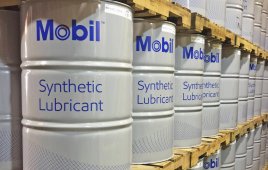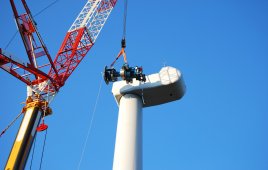Manufacturers of specialty lubricants frequently add to their product lists for wind-power equipment. For instance, a recent lube, a high-performance grease, comes from a special blend of base oil and additives to cover different lubrication requirements of individual bearing applications in wind-power stations. The grease is well suited for most in-nacelle tasks.
Recent ideas to reduce maintenance costs and simplify lubrication routines in the nacelle include switching to one lubricant for all bearings. Another is an adhesive grease for open gears. The grease is said to provide good adhesion and protection against high loads and corrosion. It is well suited to lubricating gears in pitch and yaw drives, while reducing the risk of migration inside the nacelle and onto the tower.
Another recent lubricant for wind turbine gearboxes provides a high viscosity to address cold weather effects, without need for additional VI improvers. It has a higher heat capacity than hydrocarbon oils, which lets it transfer more heat, forestalling a shutdown when turbine output is at its maximum. The lubricant has better lubricity at ambient conditions, and so has potential to shift a turbine’s power-versus-wind-speed curve to the left, leading to greater power output when it is less than the maximum design output. Lubricants of this sort are also said to address the issue of micropitting, which can lead to wearing and changes in gear teeth shape, reducing gear accuracy, and increasing vibrations and noise. High-viscosity lubricants provide a relatively thick lubricant film that can help reduce debris and worn particles that often accompany less well-lubricated gears.
Particle detectors: These sensors look for debris in oil. Small ones can occupy less than 150 in.3 yet provide contamination control. A few features of such devices include monitoring system contamination trends, and early warning Leds or digital-display indicators that tell of low, medium, and high contamination levels. One unit boasts of needing only 3 sec to take a sample, and works at flow rates of 40 to 140 ml/min. Working pressure can be up to 6,000 psi.
Filed Under: Lubricants




